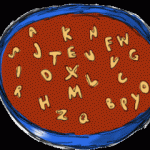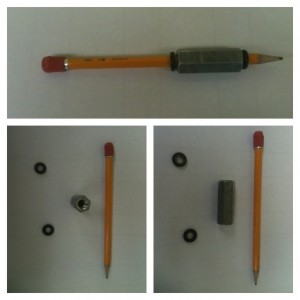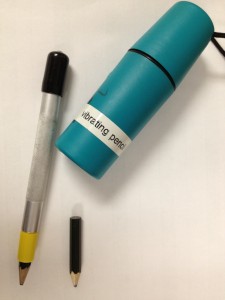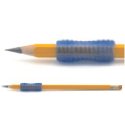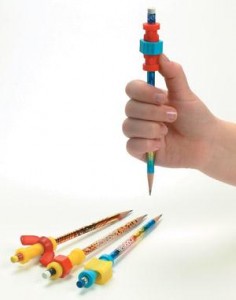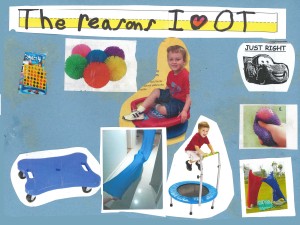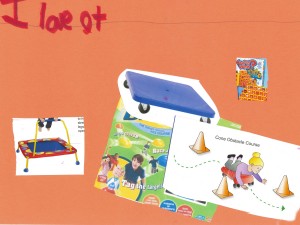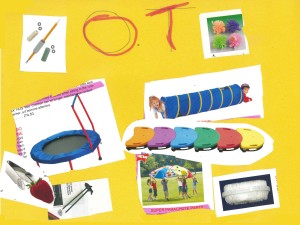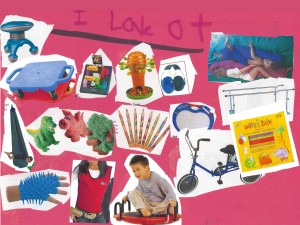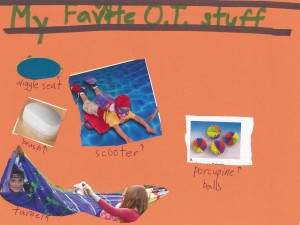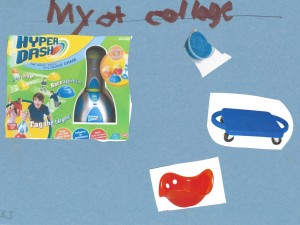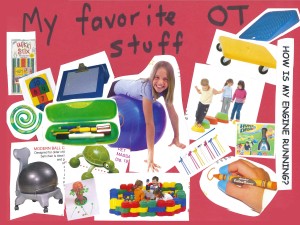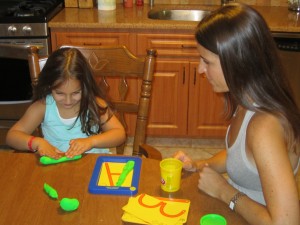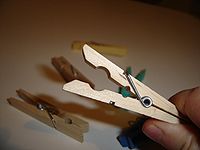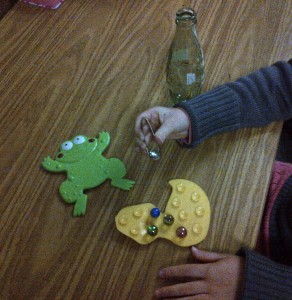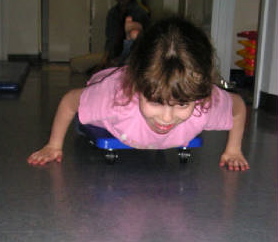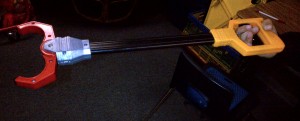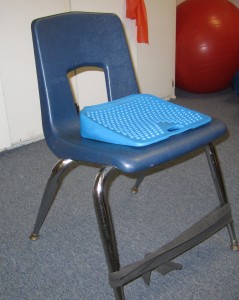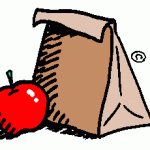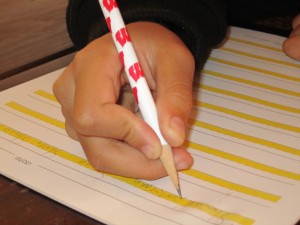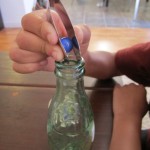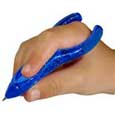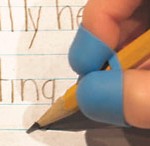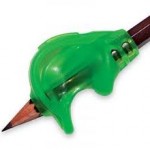If you are a parent of a child with special needs, the thought may have crossed your mind as to how you could create a fun, effective and sensory rich environment in your home. Space and budget are often reasons that may hinder families from doing so. The great news is that there are so many creative and affordable sensory solutions to bring much needed sensory input into your home. The suggestions provided below can help your child with sensory processing and modulation difficulties to better regulate their arousal state and activity level.
Ball Bath
A ball bath is a classic, effective sensory “must have” when creating a sensory space!
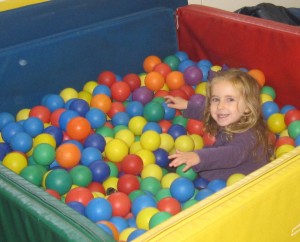 There are multiple sensory benefits a ball bath provides, as it can both ignite a child’s senses with the bright colors and sounds created from “splashing around” and at the same time calm them down by offering a wonderful tactile experience. While the bigger ones sold by therapeutic equipment retailers are ideal (especially for your bigger, more active children), they are quite expensive. A low cost option is to fill an inflatable kiddie pool with balls (there are different varieties depending on the space you have available). I found one inflatable called a Jump-O-Lene with a base that offers some spring like a trampoline. So now, your standard multi-sensory ball bath has become a more satisfying sensory experience, as we have added some bounce bringing vestibular (movement) and proprioceptive (body position) input into the mix!
There are multiple sensory benefits a ball bath provides, as it can both ignite a child’s senses with the bright colors and sounds created from “splashing around” and at the same time calm them down by offering a wonderful tactile experience. While the bigger ones sold by therapeutic equipment retailers are ideal (especially for your bigger, more active children), they are quite expensive. A low cost option is to fill an inflatable kiddie pool with balls (there are different varieties depending on the space you have available). I found one inflatable called a Jump-O-Lene with a base that offers some spring like a trampoline. So now, your standard multi-sensory ball bath has become a more satisfying sensory experience, as we have added some bounce bringing vestibular (movement) and proprioceptive (body position) input into the mix!
One thing to know ahead of time…balls will NOT remain contained in the ball bath when your child is playing. Without fail, they will be all over the room! If you, as the parent, do not want to deal with the mess, here are two cool strategies to entice your child to do the cleaning deed him
 or herself. There is a contraption called a snow ball maker that allows the child to collect the balls that fly out of the pit to make for a fun clean up and also promotes bilateral coordination and motor planning. Speaking of fun, place a small basketball net above the pit and the child can try to make hoops, as they gather the stray balls from around the room. Lastly, ball baths can get a bit icky. The easiest way to clean is to remove the balls and place them into large mesh laundry bags. Then take them outside and hose them down while in the bags and leave them outside over night to dry.
or herself. There is a contraption called a snow ball maker that allows the child to collect the balls that fly out of the pit to make for a fun clean up and also promotes bilateral coordination and motor planning. Speaking of fun, place a small basketball net above the pit and the child can try to make hoops, as they gather the stray balls from around the room. Lastly, ball baths can get a bit icky. The easiest way to clean is to remove the balls and place them into large mesh laundry bags. Then take them outside and hose them down while in the bags and leave them outside over night to dry.
Crash Clouds
Crash Clouds or crash pads offer different therapeutic benefits. Primarily a dense crash pad offers a safe place for the child to jump and crash to satiate sensory seeking behaviors. Huge benefits of crash clouds are that they are HEAVY! Hide toys under the cushions so your child has to lift in and crawl under or have your child pull it over to the other side of the room. Heavy work, which is pushing or pulling heavy loads, is essential for children that have difficulty regulating their arousal states. These are the kiddos that are crashers and jumpers and have an extremely hard time sitting still. Heavy work, a form of proprioceptive input, is a sure shot to help calm their neurological systems down. An additional benefit is that all of this heavy work is it is a fantastic way to strengthen muscles.
On therapy websites and catalogs crash pads start in price (with removable covering for washing) at $395.00. You can easily make one at home for less! You will need:
- Two duvet covers that you can buy from a discount store
- Foam cushions scraps that you can buy for CHEAP from a furniture store
Fill the first duvet with all the cushion pieces and fasten it. Then place the second duvet covering it so that you can easily remove the outer layer to wash! When picking the outer cover color stick with grays or dark colors like navy blue, as they are more calming. If you are good with sewing you can do even cheaper by sewing sheets together leaving one of the four sides open and adhering fasteners (Velcro ®, large buttons, or a zipper).
Resistive Tunnel
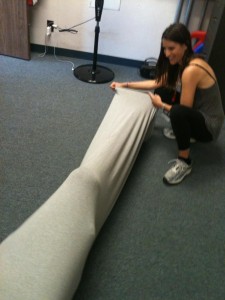 Resistive tunnels are the best kept sensory secret with which parents are not all quite familiar. These tunnels are made of soft, stretchy fabric. They provide total body pressure that not only feels good but also builds strength, body awareness, balance, and coordination as a child crawls or walks through. The more resistance and heavy work load as the child pushes himself through the better! My favorite is the Fish Tunnel from Abilitations but you can certainly make it cheaper by using 6 to 8 feet of stretchy fabric bought from a fabric store such as Joanne’s Fabric & Craft Store. Fabrics that work well are ribbed cotton, Lycra ®, and the material used to make bathing suits. Use a stretch stitch on your sewing machine and sew the fabric the long way and keep the gap open on both sides 22″ to 26” depending on the size of the child. There are also cheaper ready-made options out there if you do your research (OK, I did it for you…click here)
Resistive tunnels are the best kept sensory secret with which parents are not all quite familiar. These tunnels are made of soft, stretchy fabric. They provide total body pressure that not only feels good but also builds strength, body awareness, balance, and coordination as a child crawls or walks through. The more resistance and heavy work load as the child pushes himself through the better! My favorite is the Fish Tunnel from Abilitations but you can certainly make it cheaper by using 6 to 8 feet of stretchy fabric bought from a fabric store such as Joanne’s Fabric & Craft Store. Fabrics that work well are ribbed cotton, Lycra ®, and the material used to make bathing suits. Use a stretch stitch on your sewing machine and sew the fabric the long way and keep the gap open on both sides 22″ to 26” depending on the size of the child. There are also cheaper ready-made options out there if you do your research (OK, I did it for you…click here)
Tactile Tent
Children are naturally exposed to a variety of tactile media (i.e. grass, glue, finger paint, sand, fabrics, etc) in the development of normal tactile processing. Sometimes children will not engage in messy tactile play because they are defensive or hypersensitive. It is then essential to find creative ways to introduce these to them.
Quiet spaces for our sensory kids are optimal. A tent can serve many purposes but for now I am recommending that you create a Tactile Tent. Inside you can make bins (under bed boxes work well for this) of different textures including, but not limited to, beans, rice, or Moon Sand. Such tactile
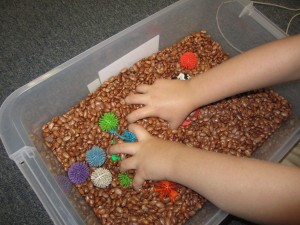 media is great for the tactile defensive or hyper-sensitive child. You can expose them to different textures slowly to increase their tactile exploration in a non-threatening, fun setting. Eventually you can upgrade to messier textures like shaving cream.
media is great for the tactile defensive or hyper-sensitive child. You can expose them to different textures slowly to increase their tactile exploration in a non-threatening, fun setting. Eventually you can upgrade to messier textures like shaving cream.
For your tactile seeking child, this tent is their heaven! They can explore all different rich textures and keep it all contained so it is not all over your home! Keep a small dustpan and brush close by and the child can learn to sweep up his mess. This makes for an excellent bilateral hand skill activity!
Office Chair
A great, effective way to give your child rotary movement, a form of intense vestibular input, is as simple as an office chair that spins! If you do not already have one then a Dizzy Disc, Sit n’ Spin, or a Bilibo® are great low cost options if your child is one that seeks out intense rotary movement. An important and helpful tip, if your child typically gets increasingly active following such intense movement activities make sure to engage him/her immediately after in some sort of modulating sensory activity like heavy work or deep pressure touch.
Trampoline
When thinking of practical sensory equipment for your home, it is hard not to mention a trampoline. A trampoline offers a perfect balance of vestibular and proprioceptive input. There are so many affordable ones out there. Personally, I prefer one without a stability bar because the child has to use more core strength to jump higher. That being said, if the goal is to provide an opportunity for intense sensory input the bar allows the child to compensate for muscle weakness by providing a base of stability for them to jump high and hard! Pure Fun makes a small trampoline that has a removable stability bar.
There are so many affordable and creative ways to implement rich and often needed sensory solutions in your home. These are just a few fun ones to explore with.
– Sari Ockner, OTR/L
Shop for sensory items on amazon.com in Sari’s Bag of OT Tricks – Sensible Sensory Solutions
Like Kidz Occupational Therapy on Facebook
Follow on Twitter @Sari_KidzOT
 Don’t forget about the different secret sensory ingredients you can add to any obstacle course to meet your child’s sensory needs.
Don’t forget about the different secret sensory ingredients you can add to any obstacle course to meet your child’s sensory needs.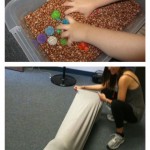 discrimination!
discrimination!



